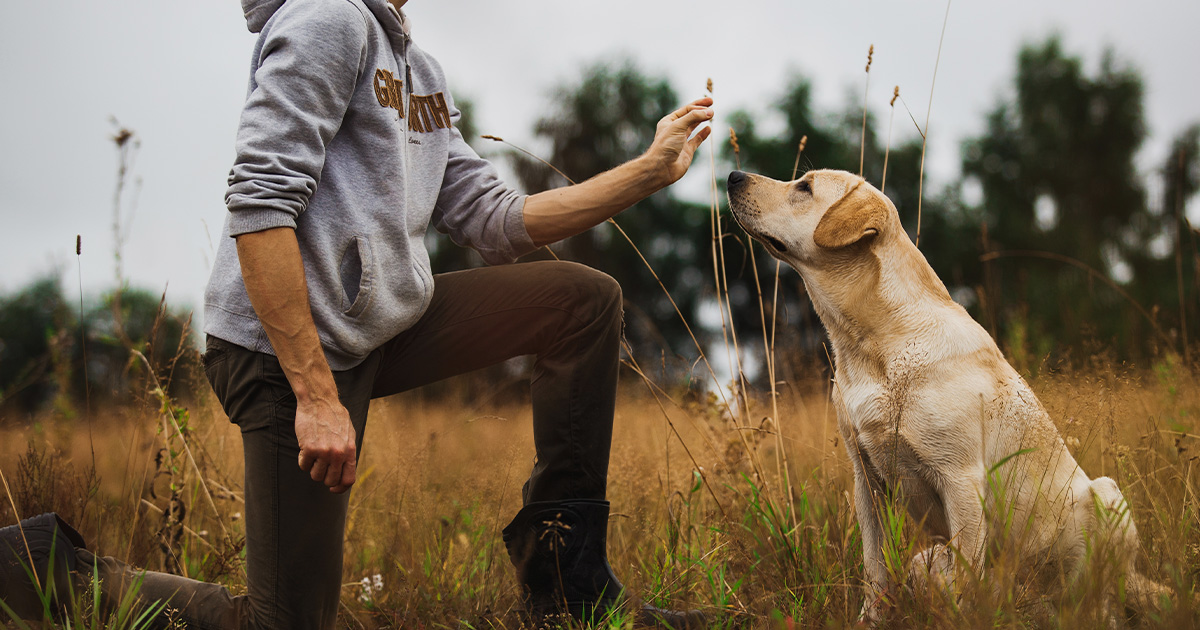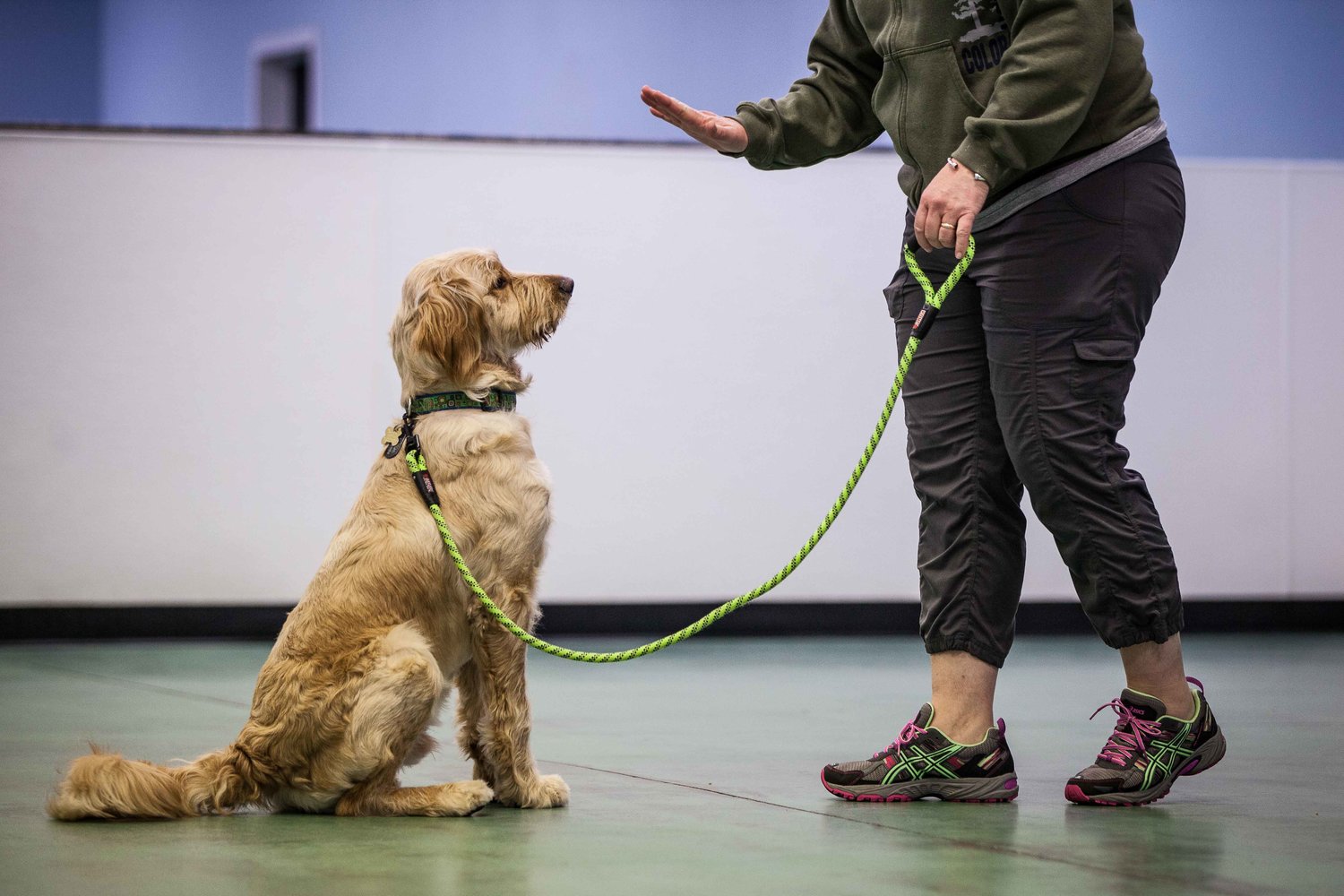Puppy Training: Start Your Pup Off Right with Professional Guidance
Puppy Training: Start Your Pup Off Right with Professional Guidance
Blog Article
Beginner's Guide to Successful Canine Training in the house
Efficiently educating a pet at home calls for a nuanced understanding of canine actions and efficient interaction approaches. Developing clear training objectives, using high-quality incentives, and maintaining uniformity throughout family participants are vital elements. Incorporating training into day-to-day regimens can enhance both engagement and retention.
Comprehending Pet Dog Habits
Understanding pet habits is essential for efficient training and fostering an unified connection between people and their canine companions - Puppy Training. Canines connect largely through body language, vocalizations, and faces, making it crucial for owners to analyze these signals precisely. Acknowledging habits such as tail wagging, roaring, or trembling can offer insights into a pet's psychological state and objectives
In addition, recognizing the natural instincts of canines, such as their pack mindset, aids proprietors develop management functions within the house. This is essential for developing an organized setting where canines feel safe and secure and are much more receptive to training. Dogs are also influenced by their socialization experiences; early direct exposure to various environments, individuals, and various other animals can significantly shape their behavior later in life.
Usual behavior concerns, such as aggression, anxiety, or extreme barking, often come from misconceptions or unmet requirements. Observing and addressing these concerns quickly can avoid escalation and make sure a favorable training experience. By fostering a deep understanding of pet behavior, owners can customize their training methods to match their canine friends, inevitably causing a well-behaved and contented animal.

Essential Educating Tools
A fully equipped training room can substantially boost the efficiency of canine training in your home. Important training tools make certain that both the trainer and the dog can engage in efficient sessions that foster knowing and bonding.
Spending in a strong chain and a comfortable, well-fitting collar or harness is crucial for safety and security and control. These tools assist develop borders and make sure the dog remains protected throughout training. In addition, a marked training location, devoid of interruptions, help focus for both the trainer and the pet.
Training aids such as training pads, cones, or agility equipment can additionally improve the experience by presenting range and challenges. Last but not least, having a notebook or digital app for tracking development can be invaluable, enabling you to note successes and areas for renovation. Using these essential tools will produce a favorable training environment and lay the structure for reliable discovering.
Creating an Educating Routine
Developing a constant training regimen is essential for reliable canine training at home. A well-structured regular not just helps in enhancing wanted behaviors however also provides your canine with a complacency and predictability. To develop an efficient training routine, start by recognizing certain training objectives, such as standard commands, chain walking, or housebreaking.
Choose an assigned time each day for training sessions, ideally when your canine is responsive and sharp. Sessions needs to be short, about 5 to 15 minutes, to keep emphasis and stop exhaustion. Consistency in timing and atmosphere will boost your canine's learning experience.
Integrate training right into daily activities to strengthen abilities. Practice commands throughout walks or mealtime, which incorporates finding out right into natural regimens. Furthermore, continue to be versatile and adjust the routine as needed, fitting your dog's power levels and mood.
Favorable Support Methods

When executing positive support, it is necessary to choose benefits that are motivating for your canine. High-value deals with, such as tiny pieces of poultry or cheese, can be especially effective throughout training sessions. Furthermore, varying the benefits can keep your canine's interest and excitement.
Start with easy commands, like "sit" or "stay," and gradually progression to much more complex jobs. Consistency is essential; ensure that all relative use the same commands and incentive systems to avoid complication.
Furthermore, it is crucial to continue to be client and prevent aggravation. Pets, like humans, find out at their own pace. By promoting a helpful training atmosphere with positive reinforcement, you can enhance your canine's learning experience while strengthening the bond in between you and your furry companion, preparing for successful training end results.
Common Educating Difficulties
While training a pet dog in the house can be a rewarding experience, it usually features a set of typical obstacles that can test both persistence and uniformity. One prevalent problem is distraction. Dogs may become conveniently sidetracked by noises, activities, and even scents in their setting, making it tough to maintain their focus throughout training linked here sessions.
One more challenge is inconsistency in commands and reinforcement. It can confuse the pet and prevent progress if family members make use of various cues or rewards. Establishing a unified method is necessary for effective communication.
Additionally, pet dogs can experience frustration or anxiety, especially if they do not understand what is expected of them. This can cause unwanted actions, such as barking or chewing.
Finally, the timing of support is critical. Postponed benefits can reduce the efficiency of positive reinforcement, as pets might stop working to connect the actions with the benefit.
Getting rid of these obstacles requires commitment, clear interaction, and an organized training strategy - Puppy Training. Acknowledging and resolving these typical obstacles will lead the way for a more pleasurable and effective training experience in your home
Conclusion
Finally, successful dog training at home requires a thorough understanding of canine behavior and effective communication approaches. By establishing clear training objectives and making use of premium treats together with positive reinforcement, the training process comes to be more gratifying for both the instructor and the dog. Persistence, consistency, and versatility are necessary elements that promote understanding. Inevitably, integrating training right into day-to-day routines improves the bond in between pet and proprietor, making the experience both delightful and productive.
Developing a constant training regimen is vital for effective canine training at home.Favorable reinforcement strategies are basic to effective dog training, promoting preferred behaviors with incentives rather than click reference punishment. By fostering a supportive training environment through favorable reinforcement, you can enhance your pet's understanding experience while enhancing the bond between you and your fuzzy buddy, laying the groundwork for successful training outcomes.
In verdict, effective dog training at home necessitates a detailed understanding of canine actions and reliable interaction strategies. By developing clear training objectives and using high-quality deals with alongside favorable reinforcement, the training procedure ends up being extra satisfying for both the trainer and the canine.
Report this page